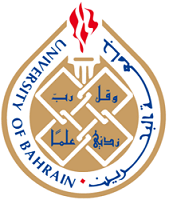الملخص الإنجليزي
Abstract :
Transportation plays a key role in facilitating trade and social interactions worldwide.
However, transportation systems in most countries, including Bahrain, face various
serious challenges. This has made it essential to have a thorough comprehension of
travel demands and driver’s characteristics for the development of engineering
solutions that can facilitate the advancement of these transportation systems. This
thesis aims to explore the influential factors concerning travel mode choice in Bahrain
and utilize mode choice models to forecast the probable utilities of various future
public transport modes.
The study utilizes diverse 3864 data records extracted from previous surveys as well
as a recent one conducted within this research. Subsequently, using Minitab software,
two types of mode choice models were built, namely the logit model and the
classification tree model, with the model building process conducted in two
phases. The first phase concentrated on modeling the current transportation system
considering the modes of transportation currently available (Car and Bus), while phase
2 focused on modelling the future transportation system, taking into account potential
public transport modes (Car, Public Bus, Metro, and Tram). The analysis of the data
identified trip cost as the top predictor, moreover, direct and quick travel, accessibility,
and convenience were also found to significantly influence the choice of travel mode
in Bahrain. Additionally, the findings indicate that metro is the preferred choice for
future public transport, with a strong preference observed for a combination of metro
and tram. The research also suggests, in terms of model performance, that the logit
model demonstrated higher accuracy compared to the classification tree when
modelling binary responses. However, when it comes to capturing more complex
patterns, as in the second phase, the classification tree outperforms the multinomial
logit model. Overall, the thesis provides valuable insights into mode choice in Bahrain
and highlights the important factors influencing commuting decisions. The results
obtained can support the development of an efficient public transportation system that
would satisfy the needs and preferences of commuters in Bahrain and ultimately lead
to a sustainable and accessible transportation infrastructure in the country.

